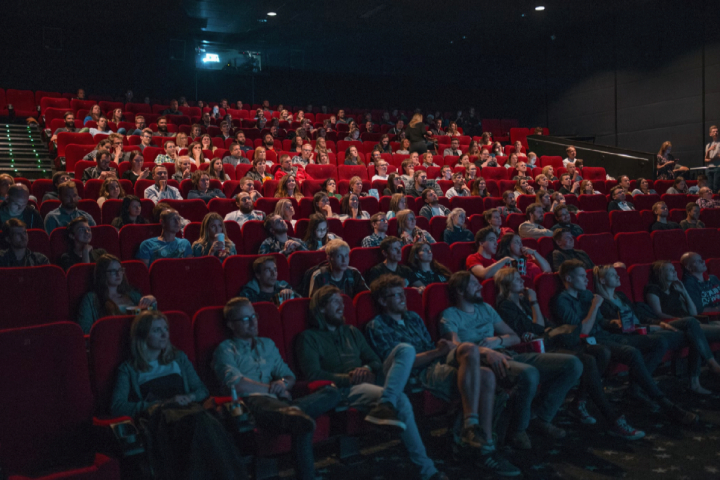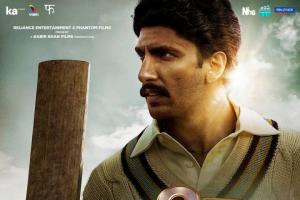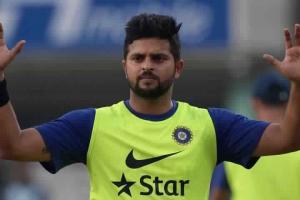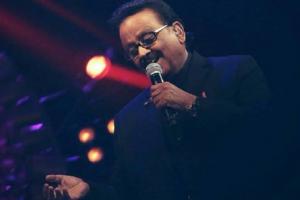The Evolution of Indian Cinema: From Traditional to Modern
Indian cinema has undergone a remarkable transformation since its inception over a
century ago. This vibrant industry has not only entertained millions but also served as a
mirror to India's evolving society, culture, and aspirations.
The dawn of Indian cinema can be traced back to the silent era, with Dadasaheb Phalke's groundbreaking film "Raja Harishchandra" in 1913. This mythological drama laid the foundation for an industry that would soon captivate the nation. As technology advanced, so did the ambitions of Indian filmmakers. The 1930s saw the introduction of sound, ushering in a new era of musical extravaganzas that would become a hallmark of Indian cinema.
In recent years, the digital revolution has brought new forms of engagement, including online gaming in India. For those intrigued by the intersection of technology and entertainment, you can read more about casino games, which offer an immersive experience that blends the excitement of traditional casinos with the convenience of modern technology. Some of them are as mesmerizing as a decent film.
The Golden Age: 1940s-1960s
The post-independence era marked the beginning of Indian cinema's golden age. This period saw the emergence of parallel cinema, a movement that focused on realistic storytelling and social issues. Filmmakers like Satyajit Ray, Ritwik Ghatak, and Mrinal Sen gained international acclaim for their thought-provoking works. Meanwhile, mainstream cinema flourished with the rise of iconic stars like Raj Kapoor, Dilip Kumar, and Dev Anand.
Key Milestones
1. 1951: "Awaara" becomes one of the first Indian films to gain international recognition.
2. 1957: "Mother India" becomes the first Indian film nominated for an Academy Award for Best Foreign Language Film.
3. 1960: "Mughal-e-Azam" sets new standards for epic historical dramas.
The Masala Era: 1970s-1980s
The 1970s saw a shift toward more commercially oriented cinema, giving birth to the "masala" film formula. These movies blended various genres – action, romance, comedy, and drama – into a single, crowd-pleasing package. This era also witnessed the rise of superstar Amitabh Bachchan, whose "angry young man" persona resonated with the sociopolitical climate of the time.
Notable Trends
1. The emergence of multi-starrer films
2. The increasing popularity of action-packed narratives
3. The rise of regional cinema, particularly in South India.
Liberalization and Globalization: 1990s-2000s
The economic liberalization of the 1990s had a profound impact on Indian cinema. As India opened up to the world, Bollywood began to cater to the Indian diaspora, resulting in more westernized themes and production values. This period also saw the industry evolve into a more organized and corporatized structure.
Key Developments
1. 1994: "Hum Aapke Hain Koun..!"; revolutionizes film marketing and distribution.
2. 1995: Aditya Chopra's "Dilwale Dulhania Le Jayenge" becomes a cultural phenomenon.
3. 2001: "Lagaan" receives an Oscar nomination, putting Bollywood back in the global spotlight.
The New Millennium: 2000s-Present
The 21st century has seen Indian cinema push boundaries like never before. With the advent of multiplexes and a more discerning audience, there's been a resurgence of content-driven cinema alongside big-budget spectacles. The lines between commercial and art-house cinema have blurred, giving rise to a new middle-of-the-road cinema that balances entertainment with substance.
Significant Trends
1. The rise of realistic, slice-of-life storytelling.
2. Increased focus on female-centric narratives.
3. Adoption of new technologies like VFX and 3D.
4. Growing international collaborations and co-productions.
5. The emergence of direct-to-digital releases, accelerated by the COVID-19 pandemic.
Technological Advancements
Technology has played a crucial role in shaping Indian cinema. From the transition to color films in the 1950s to the adoption of digital cinematography in the 2000s, each technological leap has opened new creative possibilities. Today, Indian films boast world-class visual effects and sound design, competing with international productions in terms of technical quality.
Content Evolution
The content of Indian films has evolved significantly, reflecting changing social norms and audience preferences. While family dramas and romantic comedies remain popular, there's been a noticeable shift toward more diverse and unconventional storytelling. Films now tackle once-taboo subjects like sexuality, mental health, and social inequalities with increasing frankness.
Global Recognition
Indian cinema's global footprint has expanded considerably in recent years. Films like "Slumdog Millionaire" (2008), though not a traditional Bollywood production, brought international attention to Indian talent. The rise of streaming platforms has further democratized access to Indian content worldwide, allowing for greater cultural exchange and appreciation.
Challenges and Future Prospects
Despite its growth, Indian cinema faces several challenges. These include:
1. Piracy and copyright infringement.
2. Balancing artistic integrity with commercial viability.
3. Adapting to the rise of OTT platforms and changing viewing habits.
4. Addressing issues of representation and inclusivity both on and off-screen.
However, these challenges also present opportunities for innovation and growth. As Indian cinema continues to evolve, it's likely to see:
1. More diverse and experimental storytelling.
2. Increased regional crossovers and pan-Indian productions.
3. Greater integration of interactive and immersive technologies.
4. Expanded global collaborations and market reach.
The journey of Indian cinema from its humble beginnings to its current status as a global cultural force is a testament to the industry's resilience, creativity, and ability to adapt. As it continues to evolve, Indian cinema remains poised to entertain, inspire and push boundaries for generations to come.
Stay tuned.
The dawn of Indian cinema can be traced back to the silent era, with Dadasaheb Phalke's groundbreaking film "Raja Harishchandra" in 1913. This mythological drama laid the foundation for an industry that would soon captivate the nation. As technology advanced, so did the ambitions of Indian filmmakers. The 1930s saw the introduction of sound, ushering in a new era of musical extravaganzas that would become a hallmark of Indian cinema.
In recent years, the digital revolution has brought new forms of engagement, including online gaming in India. For those intrigued by the intersection of technology and entertainment, you can read more about casino games, which offer an immersive experience that blends the excitement of traditional casinos with the convenience of modern technology. Some of them are as mesmerizing as a decent film.
The Golden Age: 1940s-1960s
The post-independence era marked the beginning of Indian cinema's golden age. This period saw the emergence of parallel cinema, a movement that focused on realistic storytelling and social issues. Filmmakers like Satyajit Ray, Ritwik Ghatak, and Mrinal Sen gained international acclaim for their thought-provoking works. Meanwhile, mainstream cinema flourished with the rise of iconic stars like Raj Kapoor, Dilip Kumar, and Dev Anand.
Key Milestones
1. 1951: "Awaara" becomes one of the first Indian films to gain international recognition.
2. 1957: "Mother India" becomes the first Indian film nominated for an Academy Award for Best Foreign Language Film.
3. 1960: "Mughal-e-Azam" sets new standards for epic historical dramas.
The Masala Era: 1970s-1980s
The 1970s saw a shift toward more commercially oriented cinema, giving birth to the "masala" film formula. These movies blended various genres – action, romance, comedy, and drama – into a single, crowd-pleasing package. This era also witnessed the rise of superstar Amitabh Bachchan, whose "angry young man" persona resonated with the sociopolitical climate of the time.
Notable Trends
1. The emergence of multi-starrer films
2. The increasing popularity of action-packed narratives
3. The rise of regional cinema, particularly in South India.
Liberalization and Globalization: 1990s-2000s
The economic liberalization of the 1990s had a profound impact on Indian cinema. As India opened up to the world, Bollywood began to cater to the Indian diaspora, resulting in more westernized themes and production values. This period also saw the industry evolve into a more organized and corporatized structure.
Key Developments
1. 1994: "Hum Aapke Hain Koun..!"; revolutionizes film marketing and distribution.
2. 1995: Aditya Chopra's "Dilwale Dulhania Le Jayenge" becomes a cultural phenomenon.
3. 2001: "Lagaan" receives an Oscar nomination, putting Bollywood back in the global spotlight.
The New Millennium: 2000s-Present
The 21st century has seen Indian cinema push boundaries like never before. With the advent of multiplexes and a more discerning audience, there's been a resurgence of content-driven cinema alongside big-budget spectacles. The lines between commercial and art-house cinema have blurred, giving rise to a new middle-of-the-road cinema that balances entertainment with substance.
Significant Trends
1. The rise of realistic, slice-of-life storytelling.
2. Increased focus on female-centric narratives.
3. Adoption of new technologies like VFX and 3D.
4. Growing international collaborations and co-productions.
5. The emergence of direct-to-digital releases, accelerated by the COVID-19 pandemic.
Technological Advancements
Technology has played a crucial role in shaping Indian cinema. From the transition to color films in the 1950s to the adoption of digital cinematography in the 2000s, each technological leap has opened new creative possibilities. Today, Indian films boast world-class visual effects and sound design, competing with international productions in terms of technical quality.
Content Evolution
The content of Indian films has evolved significantly, reflecting changing social norms and audience preferences. While family dramas and romantic comedies remain popular, there's been a noticeable shift toward more diverse and unconventional storytelling. Films now tackle once-taboo subjects like sexuality, mental health, and social inequalities with increasing frankness.
Global Recognition
Indian cinema's global footprint has expanded considerably in recent years. Films like "Slumdog Millionaire" (2008), though not a traditional Bollywood production, brought international attention to Indian talent. The rise of streaming platforms has further democratized access to Indian content worldwide, allowing for greater cultural exchange and appreciation.
Challenges and Future Prospects
Despite its growth, Indian cinema faces several challenges. These include:
1. Piracy and copyright infringement.
2. Balancing artistic integrity with commercial viability.
3. Adapting to the rise of OTT platforms and changing viewing habits.
4. Addressing issues of representation and inclusivity both on and off-screen.
However, these challenges also present opportunities for innovation and growth. As Indian cinema continues to evolve, it's likely to see:
1. More diverse and experimental storytelling.
2. Increased regional crossovers and pan-Indian productions.
3. Greater integration of interactive and immersive technologies.
4. Expanded global collaborations and market reach.
The journey of Indian cinema from its humble beginnings to its current status as a global cultural force is a testament to the industry's resilience, creativity, and ability to adapt. As it continues to evolve, Indian cinema remains poised to entertain, inspire and push boundaries for generations to come.
Stay tuned.
Comments
Write Your Comment Here
Max comment length: 100 words; Please don't use bad language otherwise your comment will be removed
Related News
Trending News
Entertainment
Big NewsQuick News
Recent News
Recent Movies
Upcoming Movies
Upcoming Birthdays
Recent Songs
Recent Movies Collection
Sports
Politics
Sports
Internet
India
Education
FeedbackAbout
Contact Us
T&C
Privacy Policy
Cancellation/Refund Policy
Are you a writer/blogger, Work with Us
© Sacnilk Technologies Pvt. Ltd. All Rights Reserved


 Bollywood
Bollywood Bollywood
Bollywood Cricket
Cricket Bollywood
Bollywood Bollywood
Bollywood Bollywood
Bollywood